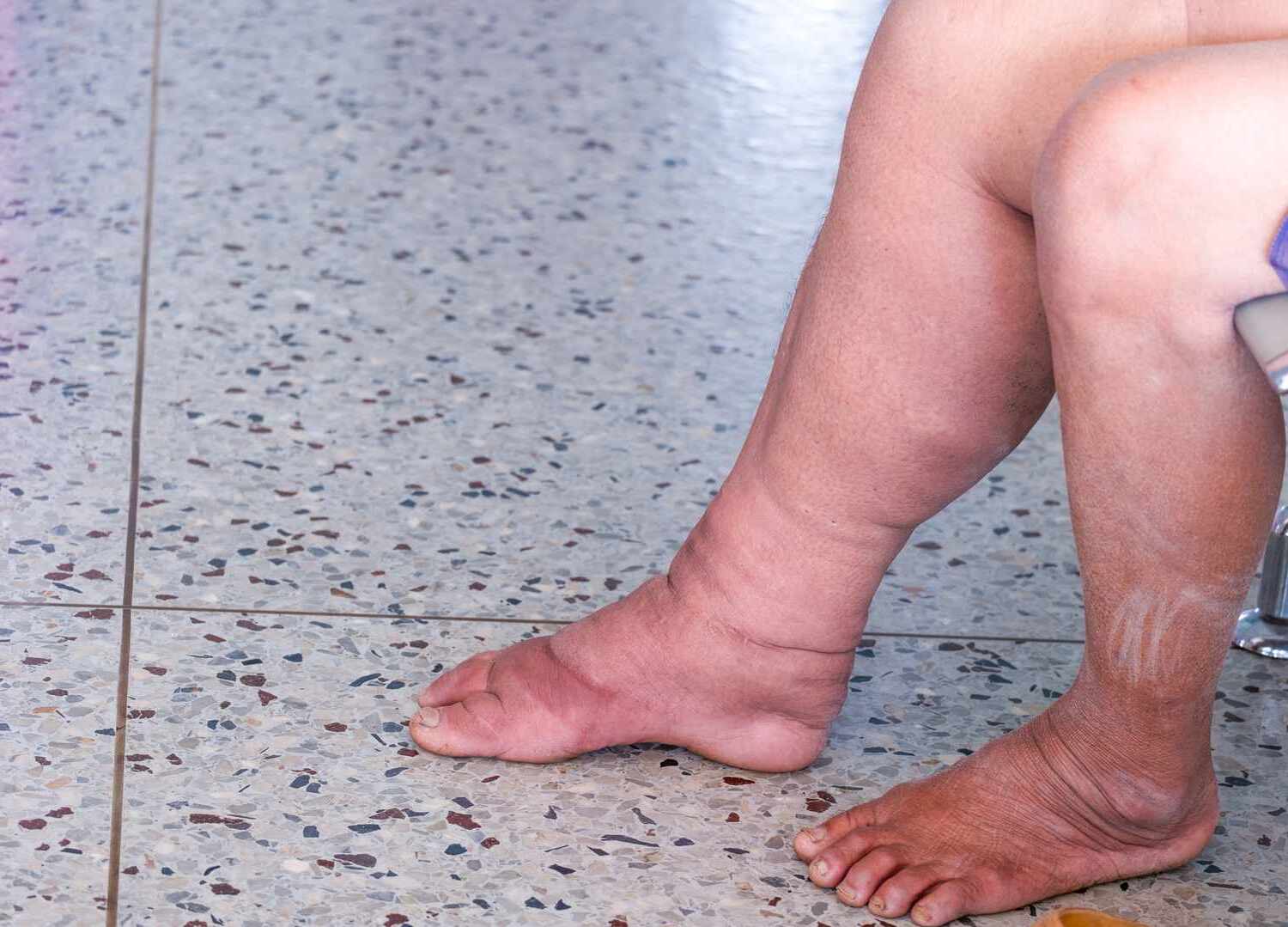
What is Milroy's Disease? Milroy's disease, also known as hereditary lymphedema type I, is a rare genetic condition causing chronic swelling in the lower limbs due to impaired lymphatic drainage. This condition is inherited in an autosomal dominant pattern, meaning only one copy of the mutated gene is needed to develop the disease. Mutations in the FLT4 gene, which affects the vascular endothelial growth factor receptor 3 (VEGFR-3), are the primary cause. Symptoms often appear at birth or in infancy, including bilateral swelling in the legs, large veins, and toenail abnormalities. While there is no cure, various treatments can manage symptoms and improve quality of life.
Key Takeaways:
- Milroy's Disease causes chronic swelling in the legs due to impaired lymphatic drainage, affecting fewer than 200 people. It's crucial to diagnose early for effective management.
- Genetic mutations in the FLT4 gene cause Milroy's Disease, leading to underdeveloped lymphatic vessels and chronic leg swelling. Understanding family history and symptoms is key for diagnosis.
What is Milroy's Disease?
Milroy's disease, also known as hereditary lymphedema type I, is a rare genetic condition. It primarily affects the lymphatic system, leading to chronic swelling in the lower limbs. Let's dive into some key facts about this condition.
-
Definition and Overview: Milroy's disease is a primary lymphedema that causes chronic swelling in the lower limbs due to impaired lymphatic drainage.
-
Causes and Genetics: Mutations in the FLT4 gene, which affects the production of VEGFR-3 protein, are the primary cause. This protein is essential for the development and maintenance of the lymphatic system.
-
Incidence and Prevalence: It's a rare condition with fewer than 200 cases reported. The exact incidence remains unknown but is considered rare compared to other lymphedemas.
Symptoms and Clinical Presentation
Understanding the symptoms and how Milroy's disease presents itself is crucial for early diagnosis and management.
-
Symptoms: Chronic swelling in the lower limbs, typically starting at birth or in infancy, is the primary symptom. The swelling usually affects both legs.
-
Clinical Presentation: Individuals often present with bilateral pedal edema, which can lead to discomfort and mobility issues if untreated.
-
Family History: The disease has a strong familial pattern, often affecting multiple generations.
Diagnostic Methods
Accurate diagnosis involves a combination of clinical evaluation, imaging studies, and genetic testing.
-
Lymphoscintigraphy: This imaging technique assesses lymphatic system function and can show functional failure rather than an absent system.
-
Genetic Testing: Identifying FLT4 gene mutations confirms the diagnosis. Molecular genetic studies reveal mutations affecting VEGFR-3 expression.
-
Imaging Studies: Venous ultrasonography and MRI help rule out secondary causes of lymphedema and provide additional diagnostic evidence.
-
Exclusion of Secondary Causes: It's crucial to exclude secondary causes like infections, proximal mass obstruction, and postradiation lymphatic obstruction before diagnosing primary lymphedema.
Treatment Options
While there's no cure for Milroy's disease, various treatments can manage symptoms and prevent complications.
-
Compression Stockings: Wearing compression stockings helps reduce swelling by improving lymphatic drainage.
-
Descompressive Massage: Regular massage aids in the movement of lymph fluid.
-
Avoiding Scratches: Preventing skin breakdowns is crucial to avoid infections like cellulitis.
-
Antibiotics: Managing infections promptly with antibiotics is essential to prevent further complications.
Complications and Associated Features
Milroy's disease can lead to several complications if not managed properly.
-
Recurrent Infections: Individuals are at higher risk of developing non-contagious skin infections called cellulitis.
-
Malignant Transformation: There's a rare risk of malignant transformation to lymphangiosarcoma, a type of cancer affecting lymphatic vessels.
-
Hydrocele: Males may be born with an accumulation of fluid in the scrotum.
-
Upslating Toenails: Toenails may be upslanted.
-
Deep Creases in Toes: Deep creases in the toes are common.
-
Papillomatosis: Wart-like growths (papillomas) can occur on the skin.
Genetic Aspects
Understanding the genetic basis of Milroy's disease helps in managing and counseling affected families.
-
Genetic Predisposition: It's inherited in an autosomal dominant pattern, meaning a single copy of the mutated gene can cause the condition.
-
Variable Expressivity: Severity and types of symptoms can vary widely even within the same family.
-
Reduced Penetrance: About 10-15% of individuals with a FLT4 variant may show no signs or symptoms of lymphedema.
Clinical Evaluation and Molecular Testing
A thorough clinical evaluation and molecular testing are essential for diagnosing Milroy's disease.
-
Clinical Evaluation: Includes a detailed family history, physical examination, and exclusion of secondary causes of lymphedema.
-
Molecular Testing: Identifying mutations in the FLT4 gene provides a definitive diagnosis.
-
Lymphoscintigraphy: Helps assess the functional status of the lymphatic system, showing a high rate of functional failure.
-
Imaging Studies: Venous ultrasonography and MRI help in ruling out secondary causes and provide additional diagnostic evidence.
Symptomatic Treatment and Management
Managing symptoms effectively can significantly improve the quality of life for individuals with Milroy's disease.
-
Symptomatic Treatment: Includes wearing compression stockings, regular descompressive massage, and avoiding skin breakdowns.
-
Management of Infections: Promptly managing infections with antibiotics is crucial to prevent complications.
-
Rare Cases: While most cases present at birth or in infancy, some may develop later in life, highlighting the condition's clinical heterogeneity.
Family Pedigree and Medical Records
A detailed family pedigree and reviewing medical records are essential for accurate diagnosis and management.
-
Family Pedigree: Charting the family history as far as the fourth generation can provide valuable information about the inheritance pattern.
-
Medical Records Review: Reviewing available medical records helps understand the clinical presentation and progression of the condition.
Lymphatic Hypoplasia and VEGFR-3 Mutation
Key features of Milroy's disease include lymphatic hypoplasia and mutations in the FLT4 gene.
-
Lymphatic Hypoplasia: Underdevelopment of lymphatic vessels leads to impaired drainage and swelling in the lower limbs.
-
VEGFR-3 Mutation: Mutations in the FLT4 gene affect the expression of VEGFR-3, crucial for lymphatic vessel development and maintenance.
-
Chromosomal Location: The FLT4 gene is located on chromosome 5q35, highlighting the genetic basis of the condition.
Understanding Milroy's Disease
Milroy's disease, a rare congenital condition, causes chronic swelling in the lower limbs due to impaired lymphatic drainage. It's primarily caused by mutations in the FLT4 gene, affecting the VEGFR-3 protein crucial for lymphatic system development. Symptoms often appear at birth or in infancy, including bilateral swelling, large leg veins, and toenail abnormalities. Diagnosis involves clinical evaluation, imaging studies, and genetic testing. While there's no cure, treatments like compression stockings, massage, and antibiotics for infections can manage symptoms. Genetic counseling helps families understand the inheritance pattern and risks. Ongoing research aims to uncover more genetic causes and improve treatments. Understanding and managing Milroy's disease requires a comprehensive approach, combining medical care, patient education, and family support.
Frequently Asked Questions
Was this page helpful?
Our commitment to delivering trustworthy and engaging content is at the heart of what we do. Each fact on our site is contributed by real users like you, bringing a wealth of diverse insights and information. To ensure the highest standards of accuracy and reliability, our dedicated editors meticulously review each submission. This process guarantees that the facts we share are not only fascinating but also credible. Trust in our commitment to quality and authenticity as you explore and learn with us.


